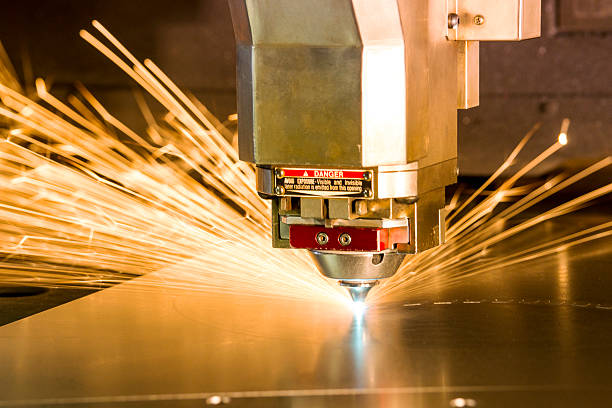February 26, 2023

The precious gems of manufacturing machines, cutting tools, are
indispensable. Global demand for metal cutting tools is increasing.
The flexibility of cutting tools make it simpler and faster to complete
different tasks. However, there are several kinds of cutting tools available on
the marketplace, all designed for a specific purpose.
People often get confused among various cutting tools. It is certainly
difficult to pick the appropriate solid
cbn inserts manufacturers to machine the parts. This article will explain
the distinctions between different kinds of cutting tools and how to pick the
most appropriate one for your particular cutting operation.
Let's look at the cutting tools in more detail!
What is a cutting tool?
Cutting tools are sharp, wedge-shaped tool that is used to remove or cut
materials for shaping or manufacturing parts. They are typically made from
toughened tools that can be used in a variety of materials, and feature unique
designs. The velocity of the cutting tool and workpiece is responsible for the
cutting process. Tools for cutting are usually designed to cut metals but are
also used for different functions.
Cutting tools are connected to various machines to provide a variety of
cutting operations, including drilling, turning milling, and others. There are
many geometries you can use to design cutting tools such as solid cbn inserts
for hard turning with different clearance angles.
The classification of cutting tools is based on Material
There are many materials that are machined and cut within the manufacturing
industry. Different cutting tools are utilized for each specific material, with
distinct properties for efficient cutting. Below is an inventory of cutting
tools based on their properties and composition.
Carbon steel tool
High-speed steel tool
Cemented carbide tool
Ceramics tool
Cubic Boron Nitride Tool
Diamond Tool
1. Carbon Steel Tool
For companies that need to perform low-speed machining operations carbon
steel cutting tools are a great option. They typically have 0.6 to 1.5 percent
carbon and 0.5% Mn. Moreover, Cr and V can increase the hardness of the cutting
tools as well as the size of the grains.
Carbon tool steel is usually not recommended for modern machining processes.
It is not able to withstand higher temperatures (more than 250°C).
It is possible to find the use of this material in milling tools, twist
drills, and forming tools to cut soft materials likemagnesium or brass.
2. High-Speed Steel (HSS) Tool
High-speed steel tools are made up of many alloying elements, such as
molybdenum, chromium and vanadium. These alloys improve wear resistance and
toughness. It is able to withstand temperatures of that reach 600°C. This means
that it loses its hardness from 650degC onwards. You can however run the
high-speed steel tools under surface treatments to prolong the life span of the
tool.
They can be used to drills, broaches and single-point lathes.
3. Cemented Carbide Tool
Cemented carbide tools are the result of the process of powder metallurgy. It
composes tantalum, tungsten, and titanium carbide, and cobalt serves as the
binder. The tool is referred to as cermet if nickel or molybdenum are used as
the binder. These tools are considered extremely hard because they are able to
keep their hardness to nearly 1000 degrees Celsius.
High cobalt cemented carbide tools are great to make rough cuts. The tools that has lower
cobalt is utilized to finish. They are best suited for the machining of
non-ferrous metals as well as cast iron.
4. Ceramics Tool
Normally aluminum oxide and silicon nitride act as efficient ceramics
materials. Ceramics are chemically inert and aren't easily joined to metals.
They are extremely durable in terms of heat, wear, and corrosion resistance, in
addition to having high hardness. Additionally, ceramic tools operate 10 times
faster than tools made of HSS. They maintain their stability up to 1800°C. So,
no coolant is required.
Ceramic tools are vital in dry, high-speed and hard cutting. It can also be
used to cut hard-to-machine materials manufacturing. Ceramics tools should be
used in CNC machines to meet high-speed requirements.
5. Cubic Boron Nitride (CBN) Tool
Cubic Boron Nitride, which is the second-hardest of all cutting tools, is
extremely sought-after. It's a great thermal conductor, with exceptional thermal
stability. It can be heated to temperatures up to 10000°C.
Cubic Boron Nitride tools are perfect to process hardened steel workpieces.
Additionally, it is able to cut through hard cast iron, cement carbide,
superalloy, and more. However they pcd reamer manufacturer are not suitable for
the materials with high plasticity.
6. Diamond Tool
Diamond is among the most rigid and expensive substances known to mankind. It is thermally conductive and has a high melting point. Diamond tools can help you get a perfect surface finish and dimensional precision. Besides its advantages but it also has a low thermal stability, because of which it loses hardness once temperatures go over 700degC-800degC. This makes it unsuitable to cut ferrous metals.
Posted by: VincentBusiness at
06:14 AM
| No Comments
| Add Comment
Post contains 821 words, total size 6 kb.
35 queries taking 0.0161 seconds, 83 records returned.
Powered by Minx 1.1.6c-pink.









